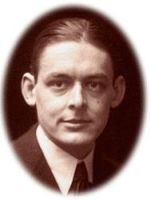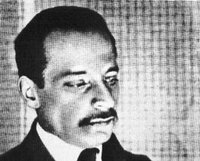Today, February 7, marks the two hundredth birth anniversary of Charles Dickens. This essay on a new book about Dicken's early years in literature appeared last weekend in The National.
That an increase in information does not always produce an increase in knowledge is one of the lessons of our overdriven age. But on a smaller scale, it might also be seen as one of the essential principles – and, when forgotten or ignored, then criticisms – of the practice of biography.
The fundamental question of biography, or the art of the interpretation of one human being by another, has always been the question of the selection of detail, of the shape of significance. The massive biographies that take a cradle-to-the-grave approach to their subjects, pouring over the distinction of the person every factoid, reminiscence, contextual detail and speculative whisper that can be gleaned from labour in the archives, might be seen as actually dodging this question, content to bask in the reflected light of the subject’s name (Picasso! Steve Jobs! Lady Gaga!).
But a more sensitive and ambitious approach to biography, particularly when applied to over-interpreted subjects, concedes that even a fascinating human being is not evenly interesting, that even in the richest of lives there seem to be periods when every hour is hot with ferment, followed by passages of consolidation, drift, torpor, even regress. If the reason we are attracted to biography is the allure of the drama of human self-fashioning seen from the inside, then these rewards can just as well be gleaned by the choice of a suite of years, and not the whole life.
The excitement of this method – that of the partial, but pointed, biography – is that it is defamiliarising, hovering not above its subject but beside it. In place of the person whom we believe we know, intimately, we are given a figure, answering to the same name, seen confronting a decisive problem in a way that will change both self and world. Through the verb in its title, Becoming Dickens, Robert Douglas-Fairhurst’s study of Charles Dickens in the early years of his career shows us what it wants to give to the celebrations of 2012, the bicentenary of Dickens. It is a Dickens who, throwing himself into the currents of London in the 1830s, could not even be sure of his next move or source of income, much less that his name would still chime in the minds of millions 200 years after his birth.
Indeed, this Dickens was not even sure of the literary appeal of his own name, reaching out to the reading public, after the fashion of the day, through a pseudonym (“Boz”) and reserving his full name for contracts with publishers and letters to the woman he was wooing. Having served, in his teens and early 20s, as a clerk in London’s teeming law courts and a parliamentary reporter for a newspaper, he thought of himself principally as a writer of scenes and sketches, holding on to a chamber in the courts even as he tested the waters of “the most precarious of pursuits” – that of the professional writer.
Douglas-Fairhurst, a scholar of English literature tenured at Oxford, brings to his book two very different kinds of strengths. The first is his knowledge of the literary and social world of 19th-century London, which is his area of academic specialisation. Indeed, with this book, he ties together within his own oeuvre a work about the greatest and most sympathetic novelistic chronicler of the British underclass, Dickens, with the greatest journalistic chronicler of that class, the reporter and editor Henry Mayhew. Mayhew’s massive four-volume work of reportage, London Labour and the London Poor (1861-62), came out last year in a new edition abridged by Douglas-Fairhurst and introduced by him as “the greatest Victorian novel never written”.
Dickens and Mayhew were both captivated by the narrative clamour and despair of a London that, over the course of the 19th century, saw a demographic boom that took its population from a million to six million. (Mayhew writes in the opening pages of his fascinating study Criminal Prisons of London that “in every thousand of the aggregate composing the immense human family, two at least are Londoners”.) In so booming, the city itself became interested in measurement, statistical projection and patterns of complex cause and effect, and cultivated an enormous appetite for newspapers and, indeed, novels.
Trawling the periodicals in which Dickens published his early, atmospheric pieces, Douglas-Fairhurst returns him to the literary-social frame within which he worked out his own method and the form – that of the serialised story, gathering momentum or changing direction over the weeks in dialogue with a feedback loop immediately generated by readers – in which he first published his novels. He shows Dickens “transforming himself from sketch writer to novelist, and from reporter to editor” when these were not at all easy or obvious decisions, although they seem so now because they have been ratified by time.
Douglas-Fairhurst’s other talent is for a very attentive and sophisticated kind of close reading – for tracing the contours of Dickens’ imagination and social vision through the analysis of sentences, phrases, even single words. This is invaluable, because if we are to understand through novels how people are marked by life, we need to pay attention to how characters and situations are marked by the text.
Observing the importance of prisons, real and metaphorical, to Dickens’ imagination – in his childhood, his father was briefly sent to prison for defaulting on debts, resulting in the young Charles having to work in a blacking factory while his sister continued to go to school – Douglas-Fairhurst stops upon a sentence in Little Dorrit. The eponymous protagonist speaks of life with her family in a debtors’ prison and of how it has marked them forever, misting up memory of life before the prison and darkening any future that might lie after it: “Whatever we once were (which I hardly know) we ceased to be long ago, and never can be any more.”
Glossing this remarkable sentence, with its exquisitely balanced clauses (two parts of four words each, then two parts of six, and winding through past-, present- and future-tense constructions in a state of tension with one another), Douglas-Fairhurst remarks, “The prison expands to fit the size of the world, and the world contracts to fit the size of the prison”. Indeed, we might say about the work of literary criticism that it shows how a sentence may expand to the size of the world too.
Again, writing about the sprawl, even the excess, of narrative energy and colour in Dickens, Douglas-Fairhurst writes: “[T]he centrifugal force of his imagination, which could never resist spawning extra characters and narrative details, is always on the verge of escaping from the centripetal force of his plots.” But this very gracefully expressed idea, which serves in this instance as a compliment to Dickens, might also be applied to Douglas-Fairhurst’s own book, and here it becomes a criticism.
The writing is sometimes self-indulgent – never more so than in the opening pages, when, in setting up the idea of Dickens having many competing paths before him as he was “becoming Dickens”, Douglas-Fairhurst supplies a portrait of an imaginary London in 1855 borrowed from a novel, The Difference Engine, published in 1990 by William Gibson and Bruce Sterling. This is a very strained kind of counter-factualism and it lays the ground for many later passages when Dickens disappears completely from view and the writing slackens from being centerless.
Douglas-Fairhurst’s other unreliable tic is his penchant for supplying dialectical explanations for situations or states of mind, which is sometimes extended to the point of self-parody (“only by trying to lose his train of thought could [Dickens] find it, just as only by leaving his home could he enjoy returning to it”). These faults mean that, while frequently insightful, Becoming Dickens falls just short of being essential.






